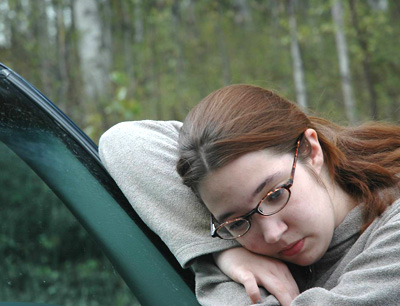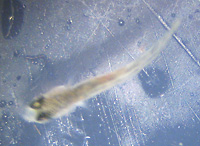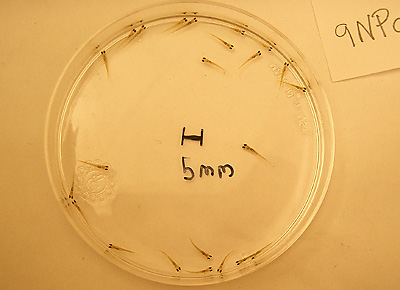Katherine O’Brian

Katie is a third year PhD candidate in the ecology and evolution biology track within the biology department at the University of Pennsylvania working in Dr.Schmidt’s lab.
She is interested in the evolution of life history strategies in natural populations. Recently she has been focusing on the role that phenotypic plasticity plays in the evolution of life history strategies.
Katherine O’Brien, 5th-year Masters
My research interests focus on the evolution of life-history traits of threespine stickleback, specifically regarding egg size, but more recently including juvenile behavior. I began working in the Foster-Baker lab as a sophomore at Clark. I started by doing dissections to accumulate data on female traits, and later I applied statistical analysis to the life-history variation. This work became the foundation for my honors project. In the 2005 field season I worked with Dr. Baker to make and rear a large series of stickleback fry for an NSF-funded grant project. Ever since then I have been interested in working with young fry and juvenile stickleback, and understanding the evolutionary forces that produce the array of offspring sizes and traits we see in Alaska.
Honors Thesis:
 Variation in the egg size of threespine stickleback (Gasterosteus aculeatus) across and within Alaskan population
Variation in the egg size of threespine stickleback (Gasterosteus aculeatus) across and within Alaskan population
For my honors project I quantified variation in egg size both within and across sixty-six Alaskan populations. I also compared differences in egg size across different environmental types. I found that there was more variation within a population than previously thought. Most interesting was my discovery of a strong correlation between water staining by tannins and average egg size.
Master’s Thesis:
(The relationship between egg size, fry size and performance)
Egg size is an important life-history trait on its own. However, to understand egg size evolution fully, the competitive environment of the resulting fry must also be studied, because the fry environment may be a major driving force of egg size distribution in the next generation. Currently, I am working on several experiments that attempt to link egg size to pre-hatch and post-hatch performance in different environment types.
The work for the Master’s Thesis has captured the interest of three dedicated undergraduates. Daniel Kousathanas (’08), Kate Massarone, (’09) and Jeremy Weiss (’10) have all joined the lab this semester with an interest in exploring problems involving egg size and fry. Their duties have been extensive, including making crosses, scoring behavioral videos, animal husbandry, and talking though experimental design.
Outside the Lab:
While an undergraduate I participated in and choreographed for Clark’s Variant Dance Troupe (a non-audition student-run dance group). As a grad student I have limited my dance time to monthly Contra dances in the Worcester area. Art and folk art have long been hobbies of mine. Crocheting has been occupying a good portion of “free time;” as I finish up work on one commissioned piece I hope to be able to move on to several others. Of course living with good friends and a new 12-cup coffee pot are always good as well.
Grants:
Eastern Alliance for Science and Technology, Undergraduate Research Fellow, 2005 for $3,000
Eastern Alliance for Science and Technology, Undergraduate Research Fellow, 2006 for $3,000
Carlson Summer Fellowship from Clark University, 2006 for $3,840 (including free campus housing)
